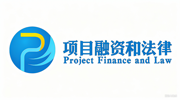Money Matters: USAID (finally) gives an update on localization
By Omar Mohammed // 19 June 2023
By now most of you would have heard that USAID wants to spend at least 25% of its funding through local organizations by 2025, a key agenda of Administrator Samantha Power.
Two years since Power was confirmed to lead the agency, USAID has now provided an update on its progress.
We took a look at the report so you don’t have to.
Progress but a long way to go
USAID released a progress report on localization last week, titled “Moving Toward a Model of Locally Led Development.” The headline figure is that the agency gave $1.6 billion of direct funding to local organizations in the fiscal year that ended in September 2022 — around 10.2% of all eligible funding. You will notice that this is way below its goal of 25%. But it is progress from the previous year’s figure of 7.4%.
What was also interesting was that the agency, for the first time, released the metric it would use to judge success on the other localization vision of Power’s — to have at least 50% of funding spent in projects where local leadership of USAID projects is evident.

The agency said it will have a clearer sense of how it was doing on that front by the end of 2023.
But here is a question for you, dear reader — is the definition of what constitutes local in the spirit of what localization should be?
Tackling China
The U.S. is worried about China, particularly when it comes to the Asian economic powerhouse’s influence in emerging markets.
Apparently, one way the Americans are trying to stifle that influence is by equipping their development finance agency to compete more with China.
Lawmakers held two hearings last week to discuss ways to do that, my colleague Adva Saldinger reports.
“We need to show up and offer a choice, that’s the best way to compete. If we have a flow of deals, if we have the financing tools available to us, if we have the workforce and capacity to process those deals quickly and generate more deal flow and deal with clients, that’s how we’re going to be able to properly compete with China,” the agency’s CEO Scott Nathan told lawmakers.
Growth spurt
DAI, one of the world’s leading development companies, has acquired a new entity, its third over the last few years. The move is part of a strategy to grow the company’s private capital business.
The acquisition of the assets of Alinea Capital, an Australian company, is geared toward helping development projects develop a plan and make connections with investors in order to attract financing.
“Project finance is increasingly important in the developing world and is an area where there are, in my view, a shortage of players who really know what they’re doing and have the staying power and expertise to get lots of projects financed,” DAI Capital CEO Gavin Wilson tells my colleague David Ainsworth.






